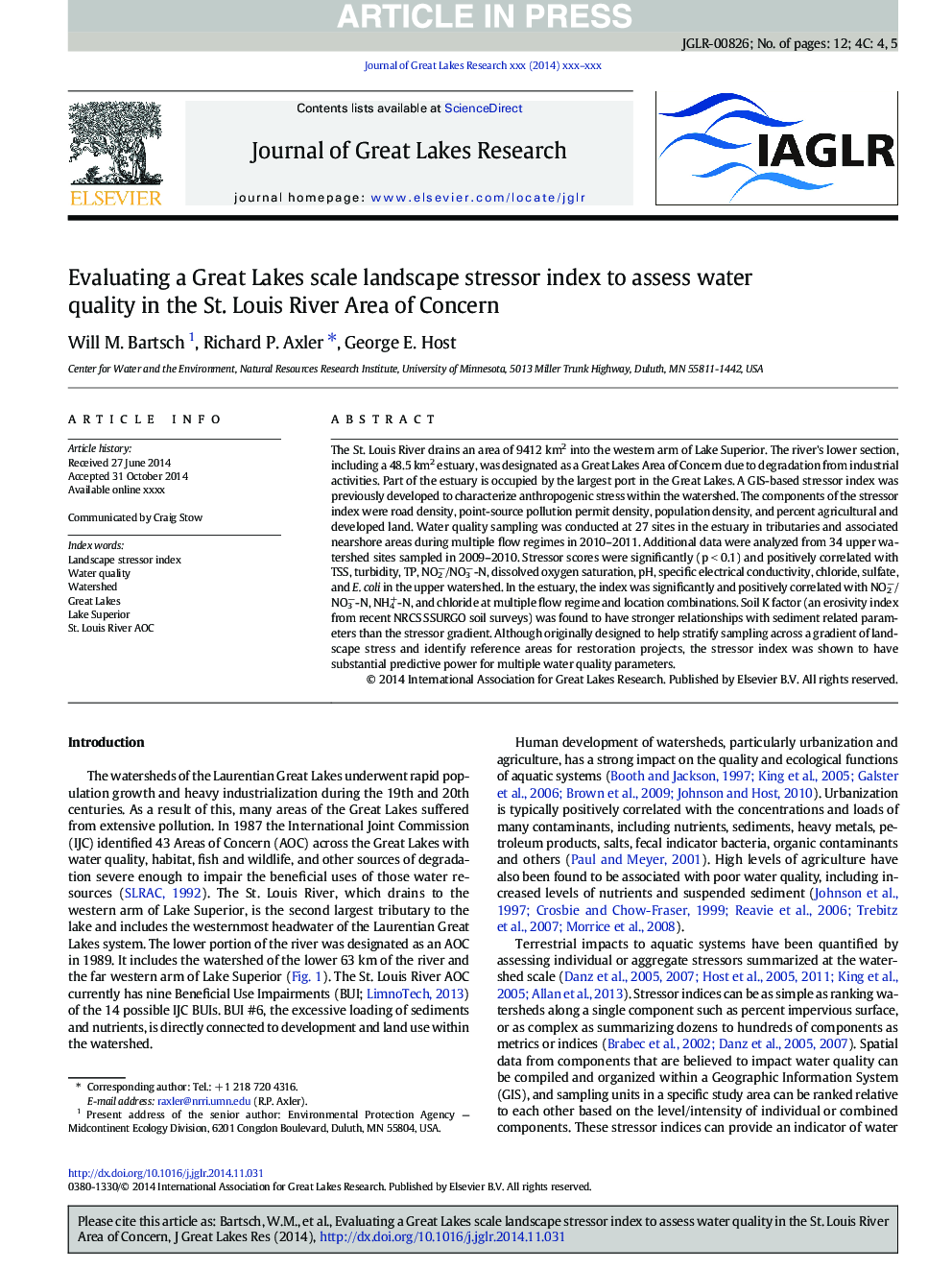| Article ID | Journal | Published Year | Pages | File Type |
|---|---|---|---|---|
| 6305144 | Journal of Great Lakes Research | 2015 | 12 Pages |
Abstract
The St. Louis River drains an area of 9412 km2 into the western arm of Lake Superior. The river's lower section, including a 48.5 km2 estuary, was designated as a Great Lakes Area of Concern due to degradation from industrial activities. Part of the estuary is occupied by the largest port in the Great Lakes. A GIS-based stressor index was previously developed to characterize anthropogenic stress within the watershed. The components of the stressor index were road density, point-source pollution permit density, population density, and percent agricultural and developed land. Water quality sampling was conducted at 27 sites in the estuary in tributaries and associated nearshore areas during multiple flow regimes in 2010-2011. Additional data were analyzed from 34 upper watershed sites sampled in 2009-2010. Stressor scores were significantly (p < 0.1) and positively correlated with TSS, turbidity, TP, NO2â/NO3â-N, dissolved oxygen saturation, pH, specific electrical conductivity, chloride, sulfate, and E. coli in the upper watershed. In the estuary, the index was significantly and positively correlated with NO2â/NO3â-N, NH4+-N, and chloride at multiple flow regime and location combinations. Soil K factor (an erosivity index from recent NRCS SSURGO soil surveys) was found to have stronger relationships with sediment related parameters than the stressor gradient. Although originally designed to help stratify sampling across a gradient of landscape stress and identify reference areas for restoration projects, the stressor index was shown to have substantial predictive power for multiple water quality parameters.
Related Topics
Physical Sciences and Engineering
Earth and Planetary Sciences
Earth and Planetary Sciences (General)
Authors
Will M. Bartsch, Richard P. Axler, George E. Host,
